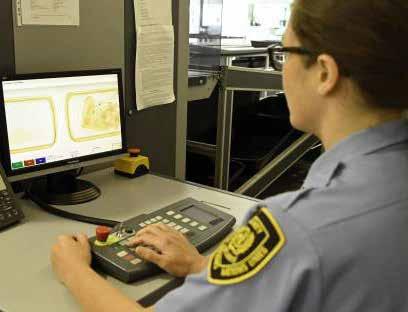
2 minute read
FOR OUR CLIMATE COLLABORATING
IAEA BULLETIN is produced by the Office of Public Information and Communication (OPIC)
International Atomic Energy Agency
Vienna International Centre PO Box 100, 1400 Vienna, Austria Phone: (43-1) 2600-0 iaeabulletin@iaea.org
Editor: Estelle Marais
Managing Editor: Michael Amdi Madsen
Design & Production: Ritu Kenn
Infographics: Adriana Vargas Terrones
IAEA BULLETIN is available online at www.iaea.org/bulletin
Extracts from the IAEA material contained in the IAEA Bulletin may be freely used elsewhere provided acknowledgement of their source is made. If the attribution indicates that the author is not an IAEA staff member, permission to republish other than for the use of review must be sought from the author or originating organization.
Views expressed in any signed article appearing in the IAEA Bulletin do not necessarily represent those of the International Atomic Energy Agency and the IAEA accepts no responsibility for them.
Cover:
(Photo: Juan Encalada/Unsplash)
Follow us on
The International Atomic Energy Agency’s mission is to help prevent the spread of nuclear weapons and to help all countries — especially in the developing world — benefit from the peaceful, safe and secure use of nuclear science and technology.

Established as an autonomous organization under the United Nations in 1957, the IAEA is the only organization within the UN system with expertise in nuclear technologies. The IAEA’s unique specialist laboratories help transfer knowledge and expertise to IAEA Member States in areas such as human health, food, water, industry and the environment.
The IAEA also serves as the global platform for strengthening nuclear security. The IAEA has established the Nuclear Security Series of international consensus guidance publications on nuclear security. The IAEA’s work also focuses on helping to minimize the risk of nuclear and other radioactive material falling into the hands of terrorists and criminals, or of nuclear facilities being subjected to malicious acts.
The IAEA safety standards provide a system of fundamental safety principles and reflect an international consensus on what constitutes a high level of safety for protecting people and the environment from the harmful effects of ionizing radiation. The IAEA safety standards have been developed for all types of nuclear facilities and activities that serve peaceful purposes, as well as for protective actions to reduce existing radiation risks.
The IAEA also verifies through its inspection system that Member States comply with their commitments under the Nuclear Non-Proliferation Treaty and other non-proliferation agreements to use nuclear material and facilities only for peaceful purposes.
The IAEA’s work is multi-faceted and engages a wide variety of partners at the national, regional and international levels. IAEA programmes and budgets are set through decisions of its policymaking bodies — the 35-member Board of Governors and the General Conference of all Member States.
The IAEA is headquartered at the Vienna International Centre. Field and liaison offices are located in Geneva, New York, Tokyo and Toronto. The IAEA operates scientific laboratories in Monaco, Seibersdorf and Vienna. In addition, the IAEA supports and provides funding to the Abdus Salam International Centre for Theoretical Physics, in Trieste, Italy.






